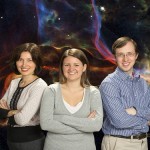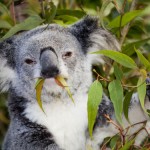
Image: Mitochondria are the power centres of our cells, but they are also highly reduced bacteria with their own set of DNA. Image: Shutterstock
A bacterium with a name from Star Wars may have solved the mystery of how our cells obtained mitochondria.
Midichloria mitochondrii was discovered in 2004 and take its name from the Star Wars microbes, Midichlorians, which grant the Jedi and the Sith the ability to use the Force. M. mitochondrii is a member of the Rickettsiales family and is believed to be the closest relative of mitochondria’s ancestor.
Mitochondria are traditionally believed to have been engulfed by primordial cells between 1.5 and two billion years ago. However, new research from scientists from the University of Sydney, Italy and Spain suggests that the mitochondria may have entered the cells as a parasite.
Co-author Nathan Lo from the University of Sydney said this challenges the concept of mitochondria as passive bacteria. “We have found instead that the mitochondrial ancestor most likely had a flagellum, so was able to move, and possibly acted as a parasite, rather than prey, on early eukaryotic cells.”
To determine how the mitochondria were originally engulfed, the researchers studied the genome of M. mitochondrii, as it is the only known bacterium able to enter the mitochondria of living cells. The genome revealed that M. mitochondrii had 26 genes coding for a flagellum (tail), including the hook, filament and basal body.
The genome also contained genes that coded enzymes allowing the bacterium to live in low oxygen environments, which have not been seen before in mitochondria’s relatives. “We found these two sets of genes were inherited from the common ancestor shared by M. mitochondrii and our own mitochondria,” said Lo.
“Mitochondria’s ancestor most likely possessed a flagellum, which is a key characteristic of many parasitic bacteria.”
The study, published in Molecular Biology and Evolution, suggests that mitochondria’s ancestor played a more active, possibly even parasitic, role in the early interactions with its eukaryotic host than previously thought. This also explains how the mitochondria managed to survive and develop a relationship with eukaryotic cells in an oxygen-poor environment two billion years ago.
“This should cause a rethink of how the symbiosis between mitochondria and eukaryotic cells originally developed – one of the most controversial topics in biology,” said Lo.
Source: The University of Sydney






